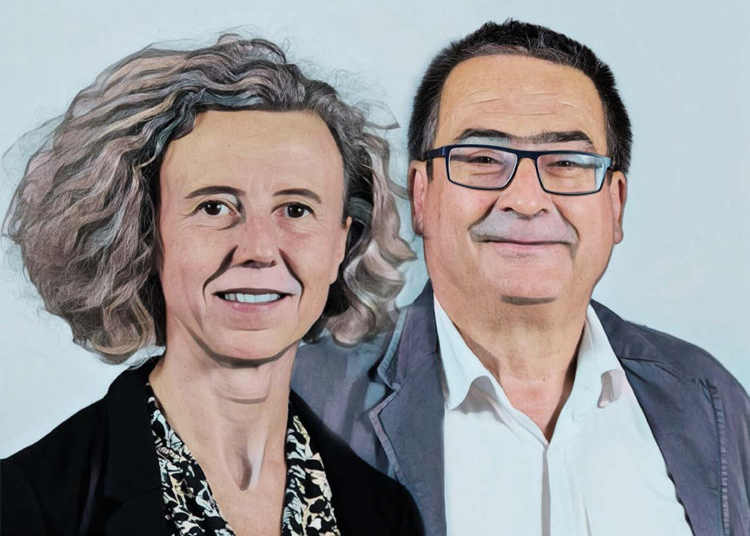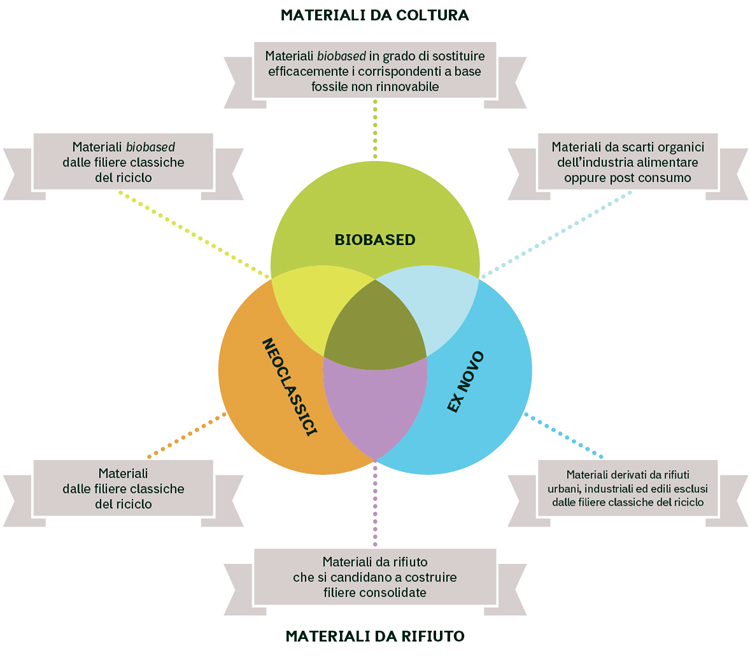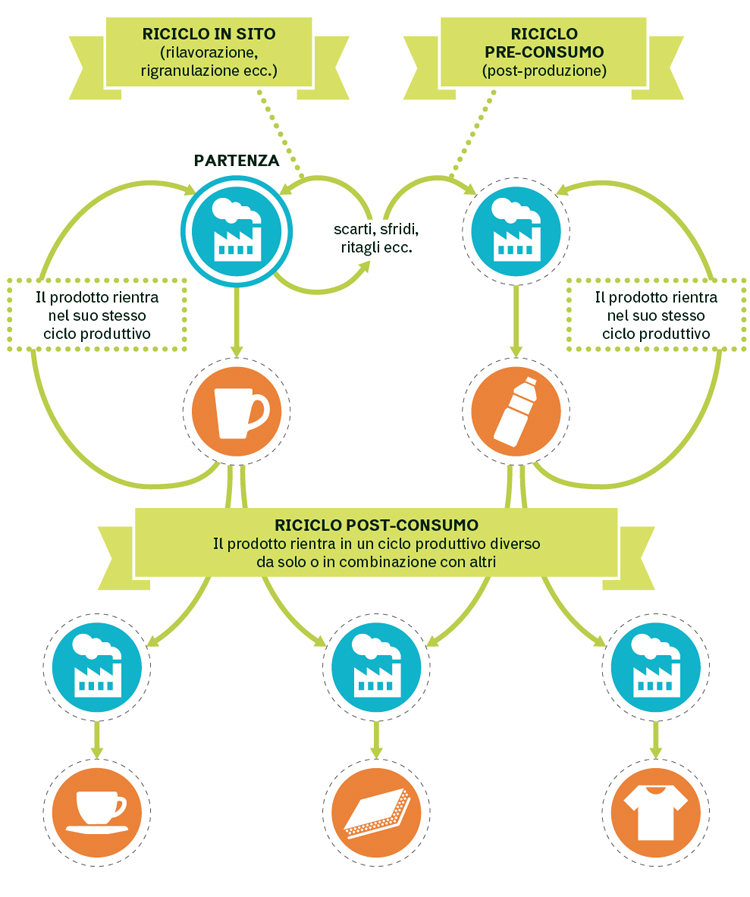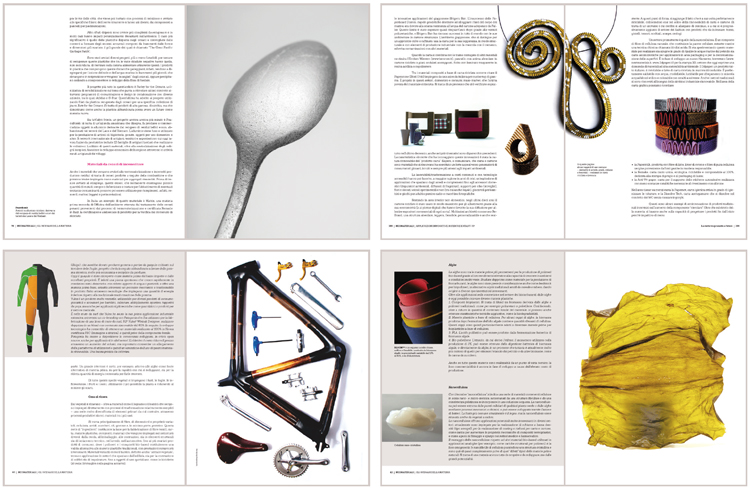
Biobased neoclassical and ex novo materials. These are the neomaterials representing the new scenarios of matter. Plant or bio-based, extracted from urban mines or recovered from waste, they are the protagonists of the circular economy paradigm. Renewable Matter asked Anna Pellizzari, who, together with Emilio Genovesi edited the book Neomateriali nell’economia circolare (Edizioni Ambiente, 2017), to describe their distinctive features.
What are the macro-factors modifying the big picture of materials used by industries (demography, scarcity of resources, pressure on ecosystems)?
“The current industrial model, still based on a linear produce-consume-dispose path, stems from the assumption that resources are infinite. Clearly, this is not the case: the pressure from the baby boom on the one hand on the other the industrial expansion of the BRIC countries (Brazil, Russia, India and China, editor’s note) and of all other developing countries, caused a drop in the availability of raw materials, with strong tensions on the international markets. This is accompanied by a demand of naturally scarce materials – such as some metals and rare earths – necessary for example for hardware manufacturing in electronics.
“Meanwhile, the modalities of distribution and the reduction of a product’s life expectancy (on average, a mobile phone is discarded in under two years; let alone more complex products such as home appliances, cars, furniture), generate unimaginable heaps of waste. Today, in Europe, as many as 6 tonnes of raw materials, out of the 16 consumed overall by every citizen of the Union individually, become waste. It is therefore obvious that the two phenomena must interact and develop a rationale of supply and demand where waste can become resources.”

What are the “founding fathers” of the circular economy? Historical facts, books, theorists...
“It is difficult to establish the authorship of the concept of the ‘circular economy’ because it has developed over time thanks to contributions by many people. At the moment, the most exhaustive definition of circular economy is that provided by the Ellen MacArthur Foundation, with the famous chart showing – by dividing the production cycles into natural (‘biological’) and artificial (‘technical’) – the virtuous modalities according to which the linear model produce-consume-dispose can be ‘bent’ so that from all the three phases one can go back to the origin. This can occur through active policies of recycling, reusing, repairing, but also thanks to extending products’ life expectancy, through process efficiency improvement, waste reduction and smart planning.
“The concept is not new: the idea of a circular circuit of materials was already presented in 1966 by Kenneth E. Bouding in its article “The Economics of the Coming Spaceship Earth.” Although traces of the circular economy appear as far back as antiquity, where reusing goods at the end of their life and controlled management of resources were well-established practices.
“Today, one of the most original thinkers is undoubtedly Gunter Pauli, who theorized the blue economy (the blue economy aims at the creation of a sustainable global economic model inspired by biomimesis and the functioning of nature, where there is no waste, editor’s note).”

The introductory chapter to your book is entitled “Dalla linea al cerchio” (“From line to circle”), a formula that embodies the on-going transformation. What is it about and what does it imply for those who plan, produce, dispose of or recover?
“Overriding the linear model aims at reintroducing into the production cycle as many resources as possible (preferably everything) – by ‘resources’ we do not only mean physical material making up the product, but also collateral elements entering its processing, such as air, water or the energy used in the production, both generated with fossil fuels or renewables. In practice, overriding the linear model is not the mere disposal and recycling of the end product, but it also includes various ‘return policies’ that may be addressed to several levels of the production chain: from self-repairing up to the disposal right back to the origin of the chain, leading to a new production.
“The idea of a circular economy transcends the cycle of any single product, suggesting synergies amongst various companies directed at reusing what for an industry is waste and that for others can be a resource. Or imagining different consumption models, such as rental, where management, and ultimately liability of the product stays with the company, which manages to centralize all aspects to handle (repairing, updating, replacement of components as well as collection and final disposal) in a more competent and therefore more efficient manner. The McKinsey study commissioned by the Ellen MacArthur Foundation pinpoints five main strategies:
- circular supply chain;
- recovery and recycling;
- extension of a product’s life expectancy;
- development of sharing platforms;
- transition from products to services.
“For instance, getting your washing machine repaired (thus as a manufacturer making it more easily repairable) is an action pertaining to the circular economy. So is using timber from 100 trees to make drawers and planting as many. The objective of the circular economy is to combine these single elements within a joint policy aiming at zero impact.”
What is the difference amongst biobased, neoclassical and ex novo materials?
“Biobased materials are those of plant or organic origin, partially or totally made up of organic components and as such they must be considered renewable because they can be reproduced according to organic life’s ways and rhythms. Biopolymers are amongst the most innovative in this field because, thanks to increasingly interesting performances, they can replace traditional fossil-based plastic materials, as well as those ‘grown’ from bacteria or mycelia combining both the advantages of biobased materials and a considerable energy reduction in their transformation process.
“The second family of circular materials comes from the so-called ‘urban mines’ or ‘industrial mines,’ materials that until not so long ago were called ‘waste’ and that are now bound to become raw materials. Materials that for quite some time now have averted ending up in landfills thanks to established industrial supply chains and are thus defined as ‘neoclassical’: paper, glass, aluminium, steel, wood and more recently plastic materials and rubber, but also e-waste.
“There is also a third family, just emerging in the raw material panorama aiming at reusing materials that up until very recently were deemed unrecoverable for economic or processing reasons, thus inexorably destined to incineration, landfilling or storage. Materials such as food industry processing waste, but also street sweeping dust, incinerator ash, gaseous waste as well as difficult-to-recover urban waste such as nappies and plastic mix. These are ‘ex novo’ materials, that is materials considered ‘exhausted,’ but that thanks to the development of new processes and supply chains, re-enter the production cycle, often starting from the very beginning, thus becoming virgin raw materials.”

Which of the materials/supply chains described in the book is the most interesting and why?
“Undoubtedly, the most fascinating family is that of ex novo materials because it is the most challenging in terms of creativity and technological development. Actually, ex novo materials entail all round planning: from identifying the most interesting waste (that is, with a constant supply enabling the development of a stable supply chain); the creation of a business model of the supply chain including logistics; the development of a technology capable of processing waste. It also includes the concept of upcycling materials that at first could seem hopeless: incinerator ash, street sweeping dust, sewage and sludge. Materials with zero or even negative value (since their disposal comes at a cost) that are upcycled along the value chain becoming tiles, plastic materials and fabrics.”
Robotics and advanced biotechnologies are some of the most promising sectors and fundamental elements of the Fourth industrial revolution. What synergies can be identified amongst these new materials and these fast growing sectors?
“Generally speaking, we can say that neo materials fit into the same industrial paradigm: that is precisely that of the circular economy. There are several synergies: robotics and industry 4.0 have a series of practical implications on materials. Particularly on themes such as waste reduction, through innovative production processes, such as additive manufacturing, and the management of small lots while still producing on an industrial scale, this enables the reduction of production surplus. Or the ability to tag different parts of a product to plan replacement, thus extending its life. In these cases, materials can offer enabling solutions, from materials suited to be transformed through additive processes, to sensors, tags, circuit boards and much more.
“Advanced biotechnologies also make great use of biocompatible materials, which can generally be divided into two macro categories: materials that can be defined as ‘inert,’ in other words they do not have a negative interaction with the organism they come into contact with because they do not release harmful substances and are not ‘attacked’ as foreign bodies. We are talking about materials normally used in the medical sector, titanium for example. But there is also a new generation of biomaterials, simulations of organic tissues, created thanks to tissue engineering techniques.”
It would be like squaring the circle, finding the philosopher’s stone. At what stage are we in the study of combining new materials with projects for absorbing CO2 from the atmosphere?
“The main problem is CO2 low energy content, it is a low reactive molecule requiring great amounts of energy to react and to transform into another compound, and this has a negative impact on the carbon footprint of the entire process.
“The direct use of CO2 is still at an experimental stage and its advantage calculated though life-cycle assessment is not that obvious, while its indirect use is already at a more advanced stage, such as the creation of intermediate polymers in the production of polyurethanes. For instance, it can be converted into methanol and then into formaldehyde and polyoxymethylene, a building block of polyols (very important chemical compounds in food science and polymer chemistry, editor’s note). CO2-based methanol is already available on the market; it is at the core of many projects yielding encouraging results.”
Material ConneXion Italia, it.materialconnexion.com
Ellen MacArthur Foundation, Growth within: a circular economy vision for a competitive Europe, 2015; tinyurl.com/gnrrnz9

